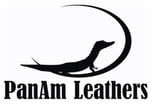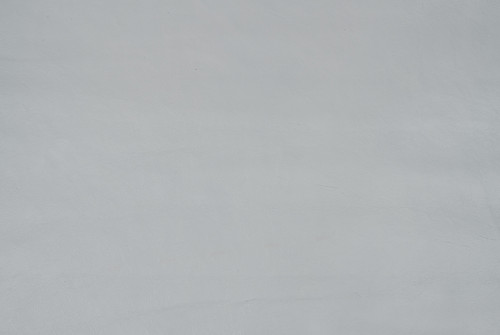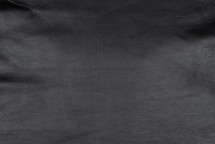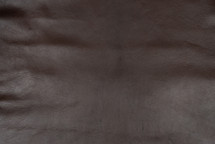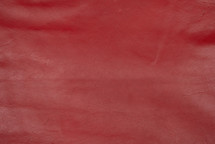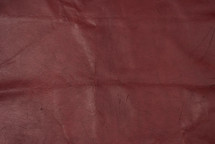- Home
- New Arrivals
- Kangaroo Leather Matte White
Properties and Characteristics of Kangaroo Leather
Kangaroo leather’s main claim to fame is that it is one of the strongest leathers at any given thickness, meaning it can remain very durable while feeling soft and supple. Typically, kangaroo leather is somewhat triangular in shape with the approximate following dimensions:
-
Three feet long on all three sides of the triangle shape
-
Approximately 5-6 sq ft each
-
Approximately 0.7/0.9 mm thickness.
Kangaroos are harvested from the wild versus farmed, so the quality ranges substantially. Since kangaroo leather is primarily used for footwear, PanAm Leathers assesses the quality of kangaroo hides based on the number of total boot vamp or shoe upper sets that each hide yields:
-
Grade 1: At least three full sets and no defects on a center triangle measuring 3.5 feet long on all sides
-
Grade 2: At least three full sets
-
Grade 3: At least two full sets
-
Grade 4: At least one full set
-
Grade 5: At least ½ set
There are very few hides with holes in any grade. Common defects include scratches, scars and scrapes. The vast majority of kangaroo hides are grades 3-4 with some grade 5. There is very little grade 1 and 2 available. Since kangaroo hides rarely have holes, almost any grade can be used for products that don’t require a flawless surface or perhaps for an intentional look of wear and tear.
What is Kangaroo Leather?
As the name suggests, kangaroo leather, sometimes referred to as k-leather, is a type of leather made from the hide of kangaroos, native to Australia. K-leather is known for its strength, durability and flexibility, making it a popular choice for various products across industries, such as shoes, boots, gloves and other leather goods. Historically, that has made it the top choice for high performance athletic footwear like cleats, but it also has broader product application on sneakers, boots, wallets, sheaths, holsters, grips, linings, and other small leather goods. Indigenous Australians have a long history of using kangaroo hides for various purposes, such as cloaks, loincloths, and bags. Kangaroo sinew was used for sewing and binding when creating these goods. It comes as no surprise that this eventually transitioned into the usage of kangaroo leather for commercial purposes. Initially, kangaroo leather was primarily used for utilitarian purposes, such as making whips, harnesses and saddles due to its strength and durability. For these same reasons, kangaroo leather gained popularity within the sporting goods industry, particularly for the manufacturing of cleats and other athletic equipment. In fact, kangaroo leather is most famous for being the pound-for-pound strongest leather available at any given thickness. Due to its highly organized skin fibers supported by a secondary mesh layer, low angle of weave, low fat content and thin grain layer, kangaroo leather can be made thin and supple without tearing. However, just like other leather products, concerns over kangaroo populations led to the implementation of strict regulations and harvesting quotas to ensure sustainability and ethical treatment. Throughout Australia, kangaroos are ethically harvested by licensed hunters in accordance with the National Code of Practice, which is informed by current scientific understanding of kangaroo behavior and ecology, ensuring humane treatment throughout the process. This policy requires hunters to undergo regular testing every five years to ensure compliance with animal welfare standards.From a sustainability standpoint, kangaroos are abundant in Australia (even, overly abundant in some areas). As a result, the kangaroos harvest is a method of population control, protecting the ecosystems and human interests where the kangaroos are overrun. Among the regulations of kangaroo harvesting, only four are allowed to be hunted since they have the largest populations: red kangaroos, eastern grey kangaroos, western grey kangaroos, and wallroos.
Properties and Characteristics of Kangaroo Leather
Kangaroo leather’s main claim to fame is that it is one of the strongest leathers at any given thickness, meaning it can remain very durable while feeling soft and supple. Typically, kangaroo leather is somewhat triangular in shape with the approximate following dimensions:
-
Three feet long on all three sides of the triangle shape
-
Ranges from 3-9 sq ft per hide, averaging 5-6 sq ft each
-
Ranges from 0.6-1.4 mm thickness. However, the kangaroo that PanAm Leathers stocks is mostly 0.7-0.9 mm thick.
Kangaroos are harvested from the wild versus farmed, so the quality ranges substantially. Since kangaroo leather is primarily used for footwear, PanAm Leathers assesses the quality of kangaroo hides based on the number of total boot vamp or shoe upper sets that each hide yields:
-
Grade 1: At least three full sets and no defects on a center triangle measuring 3.5 feet long on all sides
-
Grade 2: At least three full sets
-
Grade 3: At least two full sets
-
Grade 4: At least one full set
-
Grade 5: At least ½ set
There are very few hides with holes in any grade. Common defects include scratches, scars and scrapes. The vast majority of kangaroo hides are grades 3-4 with some grade 5. There is very little grade 1 and 2 available. Since kangaroo hides rarely have holes, almost any grade can be used for products that don’t require a flawless surface or perhaps for an intentional look of wear and tear.
Applications and Uses
Kangaroo leather's unique properties contribute to the overall performance and durability. As such, you’ll be able to find kangaroo leather across a wide range of industries and products. Let’s take a closer look at some of the ways kangaroo leather is used.
Footwear
Due to its strong and flexible nature, you’ll often find kangaroo leather used to make footwear. From cleats to dress shoes and cowboy boots, kangaroo leather is a versatile material that can be implemented in all kinds of shoe styles. It's one of the strongest lightweight leathers available, making it ideal for footwear that needs to endure high levels of wear and tear. It’s common to use high-grade kangaroo leather for the exterior of shoes, due to the aesthetic appearance and durability. On the other hand, the lower grades won’t go to waste as these are frequently used for interiors.
Fashion and Accessories
As we keep mentioning, K-leather is very soft and strong, which is a special combination. This makes it ideal for products that get daily use, like wallets, watchbands, handbags and even garments like jackets and pants. The better grades are typically used for the exteriors of these products while the lower grades can be used for linings and trim.
Performance Gear
Kangaroo leather is highly valued for performance gear across various industries due to its unique combination of strength, flexibility, and durability. Among its long list of applications, k-leather is commonly used for the upper construction of cleats. Not only is this material lightweight and breathable, but it provides players with excellent agility while being tough enough for a snug fit during high-intensity movement. Beyond athletic footwear, you’ll find grade 3 or 4 kangaroo leather in various sports equipment, such as boxing and baseball gloves. Once again, the flexibility of this leather means there’s plenty of room for dexterity and movement. On a similar note, kangaroo leather is used for military, tactical, and hunting gear for these same reasons. Hunting boots and gloves can be created using kangaroo leather, which offers great traction and support while providing a comfortable grip. Further, kangaroo leather is used for sheaths and bow grips, as well as falconry gloves and gauntlets. Additionally, kangaroo leather holsters and belts or pouches provide secure firearm retention and long-lasting performance.
Crafting Tips
Though kangaroo leather is very durable, it’s still a thin material, meaning it requires careful handling when creating leather goods. For this reason, when working with k-leather, craftsmen often rely on sharp, fine-edged tools designed for precision work, including rotary cutters, sharp scissors, thin needles, and strong, fine threads for careful stitching. It’s important to note that kangaroo leather, like most leathers, is susceptible to damage from moisture, sunlight and heat, so it needs to be stored in a cool, dry place away from direct sunlight when not in use. Avoid exposing it to water or harsh chemicals, as this can cause discoloration or damage to the leather.
Sustainability of Kangaroo Leather Production
One of the first questions one must ask of any species considered for the exotic leather trade is the impact harvesting might have on populations and any potential impacts. This is, perhaps, one of the aspects that makes kangaroo leather so viable. Kangaroos are adept breeders who have also benefited from pastoral development, artificial watering holes, rainy conditions and a lack of natural predators. In fact, much like deer overpopulation in several states in the U.S., the resulting overabundance of kangaroos leads to significant problems including overgrazing, which threatens food and shelter sources for themselves and other animals that share their ecosystem. This can cause mass starvation. So, even if there was no trade for meat or hides, the animals would still need to be culled. Throughout Australia, kangaroos are sustainably sourced and humanely harvested by licensed hunters according to the National Code of Practice, which outlines the most humane way to harvest kangaroos based on the latest scientific research into kangaroo behavior and ecology. To start, hunters must pass a test every five years to make sure they can meet the animal welfare requirements. Further, kangaroo populations are monitored by state officials who conduct surveys by aircraft in order to set annual quotas, typically around 10-20% of the population. As of 2023, there were at least 30 million kangaroos roaming in the six territories from which they can be commercially harvested to be used for kangaroo leather and meat, which are exported to approximately 70 countries. In short, the existing kangaroo population, monitored carefully by authorities, is served by the humane harvest of animals which would otherwise result in devastating impacts on the health of their communities, the land upon which they feed, and the other animals which might be impacted by excessive feeding from large kangaroo populations. Because of the benefits of a harvest, and significant government oversight into the process, Australia and the exotic leather industry can ensure the humane harvest of kangaroo leather while sustaining a healthy kangaroo population.
Ethics For The Kangaroo Leather Trade
Ensuring a healthy and robust kangaroo population is essential, especially to Australians for whom kangaroos are part of their national identity and the Aboriginal communities for whom they hold cultural and symbolic meaning. However, kangaroo leather is about more than asking “Can the kangaroo population sustain a harvest?” Ethics in the kangaroo leather trade is a multifaceted issue that requires careful consideration of environmental sustainability, animal welfare, and cultural respect. Kangaroo leather is prized for its durability, flexibility, and unique grain, making it a desirable material for various products, from fashion accessories to footwear. However, the ethical implications surrounding its production warrant close examination. As noted above, one of the primary concerns in the kangaroo leather trade is the welfare of the kangaroos themselves. Regulations and guidelines exist to govern the kangaroo culling process, aiming to minimize suffering and ensure harvesting is conducted in a legal and ethical manner. Ethical considerations include the use of skilled marksmen to minimize suffering, strict quotas to prevent over-harvesting, and adherence to humane slaughter practices. Environmental sustainability is another critical aspect of the kangaroo leather trade's ethics. Kangaroo populations can fluctuate due to factors such as habitat loss, climate change, and human interference. Sustainable harvesting practices must take into account the ecological impact of kangaroo populations on their habitats and ecosystems. As mentioned, this involves government monitoring of population dynamics, setting appropriate quotas based on scientific research, and implementing measures to mitigate any negative effects on biodiversity. Cultural sensitivity is also essential when discussing the ethics of the kangaroo leather trade. Kangaroos hold significant cultural and symbolic value for Indigenous Australian communities, who have a deep connection to the land and its wildlife. Respect for Indigenous perspectives and engagement with Indigenous stakeholders are crucial for ethical decision-making in the kangaroo leather industry. This includes acknowledging Indigenous rights to land and resources, consulting with Indigenous communities on management strategies, and supporting initiatives that promote Indigenous participation and benefit-sharing. In fact, the government of South Australia makes special note of this ethical consideration on its kangaroo guidelines page. The Australian Department of Agriculture, Water and the Environment approves state kangaroo management plans and regulates the export activities of the kangaroo industry under the Wildlife Protection (Regulation of Exports and Imports) Act 1982.
Import And Export Information for Kangaroo Leather
The demand for kangaroo leather comes from countries across the world, given its versatility and durability. The primary authority overseeing the kangaroo leather trade is the Australian government's Department of Agriculture, Water and the Environment, particularly through its Wildlife Trade Regulation division. This department is responsible for managing the sustainable use of wildlife resources, including kangaroos, and ensuring that harvesting and trade activities are conducted in accordance with laws and regulations. Additionally, the Australian government works with non-governmental organizations and other countries’ fish and wildlife departments, who provide ethical insight and oversight into trade involving wildlife, including exotic leathers. Further, it is the role of the leather companies working with exotic leathers to ensure a sustainable supply chain while maintaining wild animal populations and habitats. This is a core PanAm Leathers value and one we hold ourselves and our partners to when it comes to sourcing all of our leather products, including kangaroo leather. Below are the details specific to kangaroo processed by PanAm Leathers that you might need for Customs and Fish and Wildlife purposes:
-
Common name: Eastern grey kangaroo
-
Scientific name: macropus giganteus
-
Country of origin: Australia
-
Source: Wild
-
CITES status: non-Appendix
-
USFW 3-177 required?: yes
